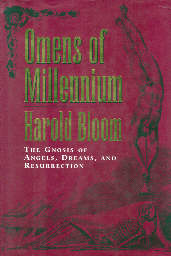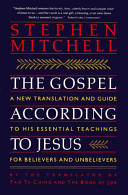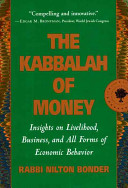The Gnostic Gospels
Elaine Pagels
Review By Dan Geddes
Contents
Chapter I, “The Controversy Over Christ’s Resurrection: Historical Event or Symbol?”
Chapter II, “One God, One Bishop”
Chapter III, “God the Father/God the Mother”
Chapter IV, “The Passion of Christ and the Persecution of Christians”
Chapter V, Whose Church Is the “True Church”?
Chapter VI, Self-Knowledge as Knowledge of God
Memorable Quotations and Descriptions
_____________
The Gnostic Gospels argued that the theological debates between the Catholic church and the Gnostics in early Christianity were largely motivated by the political struggle for the leadership of Christianity. Orthodox Christianity (which ultimately became Catholicism and should not confused with Eastern Orthodox), seeking a strong organization of believers, supported texts and interpretations that reinforced their goals. Gnostics, who were radically egalitarian in structure, did not seek the leadership of the Christian world despite perhaps a minority of adherents, and were eventually blotted in the Catholic drive to supremacy within the Christian world.
The discovery of Gnostic texts at Nag Hammadi in Egypt in 1945 allows historians of Christianity to evaluate the struggles of the early church in a new light. Prior to this discovery we have had only the texts of the Catholics, the historical winners.
Pagels states that she is sympathetic to Christianity, and believes that the establishment of orthodoxy and a strong church organization were imperative for the survival of the new religion. But this triumph of the orthodox over the Gnostics was not historically inevitable. She admits that the gospels of the New Testament and the Gnostic gospels were, at the turn of the first century, on something of an equal footing, and inclusion of the Gnostic gospels in what has become known as the New Testament was within the realm of possibility. The Gospel of John, for example, has more of a Gnostic flavor than the synoptic Gospels (and was used by the Gnostics), and yet was included in the canon, at least in part because of a passage that implies that Jesus is an exclusive road to God.
After an introduction describing how a peasant’s accidental 1945 discovery of the Nag Hammadi texts eventually found their way into scholar’s hands, Pagels devotes a chapter each to major theological issues that divided the orthodox from the Gnostics. In each, Pagels makes a compelling argument that political considerations influenced theological ones.
Chapter I, “The Controversy Over Christ’s Resurrection: Historical Event or Symbol?”
In Chapter I, “The Controversy Over Christ’s Resurrection: Historical Event or Symbol?”, we learn that the orthodox believed in Christ’s bodily resurrection, whereas the Gnostics saw the resurrection as a figurative event. Pagels points out that even the canonical gospels offer varying descriptions of Christ’s form when he appeared to the disciples after the resurrection (6). But the orthodox Christians ultimately supported the notion of bodily resurrection; the fact that Jesus (the only authority whom Christians of all the factions recognized) appeared to Peter after his death, seemed to imply that he was passing the mantle of leadership to Peter. And yet Mark and John both claim that Christ first appeared to Mary Magdalene. But the whole doctrine of Petrine Succession (that the authority of the Pope (Bishop of Rome) comes from the unbroken chain of being from Jesus to Peter to all the subsequent bishops) relies on this transfer of power from Jesus to Peter.
It is interesting that among followers of Jesus brother, James the Just, the tradition took hold that Jesus first appeared to James after his resurrection—showing the importance of post-resurrection visitations to establish authority among followers.
But this idea that authority was passed on solely to the apostles after Jesus resurrection, had important political considerations. After that, authority could only be passed on from the limited circle to their own successors. True spiritual authority could not—in this view—arise from somewhere outside the circle, like from among the Gnostics, for example.
The Gnostics regarded the literal interpretation of the resurrection to be a “faith of fools” (12). The Gnostics ascribed spiritual authority to those who had achieved gnosis (knowledge of God). This could be achieved by anyone, regardless of their socio-economic class. They valued gnosis more than the claims of the orthodox bishops. The Gnostics pointed out that Jesus reserved some of his teachings as secret for the disciples—so there was nothing intrinsically suspect about secret teachings such as those the Gnostics used. Gnostics believed they were developing an open-ended tradition of spiritually, whereas the orthodox closed the tradition, maintaining that no works other than those which were eventually included in the New Testament were canonical.
The orthodox set up a system whereby all who wanted access to the miracle of the resurrection had to seek it through Jesus’ supposed successors, the Catholic Church. The Gnostics, like Martin Luther later, argued that each man or woman could find his or her own way to God.
Chapter II, “One God, One Bishop”
In Chapter II, “One God, One Bishop” Pagels relates how the orthodox sought to exclude the Gnostics with a creed that affirmed the existence of only one true God. (The Gnostics could not accept the notion that an all-good God could create this Fallen World, and so posited a second God, a false Creator God whom they felt the orthodox wrongly worshipped in lieu of the true God.) Gnostics asked why the God of the orthodox—if he were all-powerful—would feel threatened enough to proclaim himself the only one God (“no other gods before me”). God wouldn’t feel compelled to do that unless there were indeed other, perhaps higher, gods, the Gnostics argued.
The orthodox, who pushed the One God line, also simultaneously pursued the One Bishop line. “One God, one bishop” became the Orthodox’ slogan in their push to unite the many various faction of Christians. But Gnostics believed that the bishops, who had not achieved gnosis, were merely the pawns of the “false God,” the demiurge, the Creator of this Fallen World. Rather than the clear hierarchy of the Orthodox, the Gnostics selected the leaders of each meeting by drawing lots. Also, Gnostics allowed women to serve as equals in their gatherings.
Chapter III, “God the Father/God the Mother”
Indeed, another major distinction between the orthodox and the Gnostics concerned the role of women in human affairs and in the godhead. In Chapter III, “God the Father/God the Mother” Pagels relates the scriptural origins of the orthodox and Gnostic views of women. The orthodox view continued the Jewish innovation of an all-male godhead; most other Near East religions included female and male gods. In fact, the three religions born of the Hebrew Bible—Judaism, Christianity, and Islam—usually refrain from framing their God in sexual terms or imagery. Even Catholics, who view Mary as the “mother of God,” do not view her as “God the Mother.”
Despite an occasional Gnostic expression of male primacy (“…For every woman who will make herself male will enter the Kingdom of Heaven”—Gospel of Thomas), Gnostics regarded God as a dyad containing both masculine and feminine aspects of God. In this, they follow Judaism, which includes the shekhinah, or feminine aspect of God. The Gnostics pointed out that in Genesis God made humanity “both male and female,” and since He made then “in our image, in our likeness,” that there must be a feminine element in the godhead. Similarly, there is a bi-gender element in humanity; Adam contained both sexes, giving “birth” to Eve from his side.
Orthodox Christians excluded any textual scrap that implied that God was not fully masculine or neuter. The Gnostics even went so far as to see the masculine God as the false Creator god, with a superior mother god above Him. Sometimes the mother God even chastised the father God for his boast that “there is no other god before me” (again, why else would He say it if he were indeed the only God?). According to Pagels, the prime reason for the orthodox rejection of texts suggesting a feminine god was that these were a scriptural basis for the Gnostic practice of admitting women as full equals in the churches, taking priestly, episcopal, and even prophetic roles within Gnostic ceremonies. Jesus himself defied traditional Judaism with his open and inclusive attitude toward women. Paul was instrumental in tempering Jesus’ liberal attitude toward women with the traditional Jewish paternalism, admonishing women, in a notorious and controversial verse, to “keep silent in the churches” (I Corinthians 14: 34 ff.). But Pagels cites socio-economic reasons for the affirmation of male dominance in the Christian world; as Christianity began absorbing large non-Jewish populations, the paternalism of such peoples as the Hellenes reasserted itself within Christianity.
Chapter IV, “The Passion of Christ and the Persecution of Christians”
Chapter IV, “The Passion of Christ and the Persecution of Christians” recounts the divergent approaches of orthodox Christians and Gnostics to the persecution of Christians in the 1st and 2nd centuries. The two groups’ respective interpretations of the passion of Christ informed their position on the persecution Christians experienced. The central question here is one that has occupied Christians for the last 2000 years: to what degree was Jesus divine, and to what degree a man? The Gnostic text The Acts of John states that Jesus was a strictly spiritual being. Another Gnostic text, the Treatise on Resurrection stated that Jesus, as the “Son of Man,” died a human death, while as the “Son of God,” his divine spirit transcended suffering and death.
Orthodox Christians, in contrast, believed that Jesus, while the Son of God, was also a human being whose crucifixion was a literal and historical event. Pope Leo The Great (c. 447) ordered that anyone who found the Acts of John should set it on fire. Pagels believes that the orthodox vehemence about this literal interpretation of the crucifixion was a response to the persecution of Christians. How the passion of Christ was interpreted also dictated how the persecution of Christian martyrs would be interpreted. For the Roman authorities, Christianity seemed like a conspiracy; Christians seemed like worshippers of a magician who were also “atheists” in the sense of rejecting the ascendant Roman gods. Accusing someone of being a Christian was a known way of destroying an enemy. Roman citizens convicted of being Christians were mercifully beheaded; others were tortured.
But even among Christians there was controversy about whether confessing one’s Christianity before the Roman authorities was the right thing to do. Some felt that “Christ…was killed so that we might not be killed.” But martyrs (literally “witnesses” in the Greek) were eager to “imitate” the passion of Christ. The avidity of the martyrs provided strong testimony to potential converts, including Tertullian, who believed that heresy (Gnostic or otherwise) was the direct by-product of cowards looking to theologically justify their cowardice.
Although some Gnostics valued martyrdom, others went so far as to ridicule it: they argued that if martyrdom ensured salvation, then anyone who confessed Christ would be saved, simple as that. The Gnostics were more apt to stress the gnosis as salvation rather than confession and martyrdom. Gnostics even criticized the orthodox tendency to urge believers toward martyrdom.
In general, the Gnostics stressed Jesus’ divine ability to overcome his crucifixion; orthodox writers stress Jesus’ human nature and bodily resurrection. Jesus’ bodily suffering helped justify the bodily suffering of so many Christian martyrs. Martyrs or witnesses found their lives validated in the story of the human Jesus.
Chapter V, Whose Church Is the “True Church”?
Until the discovery of the Nag Hammadi texts, scholars were almost completely restricted to reading the writings of the Catholics, the winners in the struggle for the leadership of Christianity. In Chapter V, Whose Church Is the “True Church”? Pagels explores both the Catholics’ and Gnostics’ claims to be the true legatee of Jesus’ teachings. The Gnostics thought orthodox Christians somewhat blindly followed their leaders without really trying to know Christ themselves. For the Gnostics’ achieving gnosis was the crucial step in one’s Christian life, and such orthodox-valued steps as baptism, profession of the creed, or martyrdom were not enough to qualify one as a true Christian. Such elitism (“religious solipsism” p.129) surely endangered the Gnostics’ chances for survival. The orthodox Christians, in contrast, had established objective criteria for membership, allowing even simpler souls to feel they were true Christians. Satisfying Gnostic criteria for membership was far less certain for Gnostics, who understood “Christ’s message not as offering a set of answers, but as encouragement to engage in a process of searching.” (135) The Gnostics saw even their own teachings as approaches to the truth rather than as absolute truth; the orthodox, however, were willing to see their teachings as absolute truth.
Chapter VI, Self-Knowledge as Knowledge of God
In short, orthodox Christianity offered more certainty and clear answers than Gnosticism, which, despite some appealing teachings, was ill-suited to become a mass religion. In Chapter VI, Self-Knowledge as Knowledge of God, Pagels explores the Gnostic beliefs in more detail, and compares them to their ultimately triumphant orthodox counterparts. The Gnostics used the Gospel of John as a primary text for Gnostic teaching; yet Pagels argues that the orthodox accepted John into the New Testament mainly on the strength of John 14:6 (“…I am the way, the truth, and the life; no one comes to the Father, but by me”), which suggests Jesus is a unique conduit to God. Orthodox Christian leaders, seeing themselves as the legitimate earthly heirs to Jesus, felt that Jesus could only be accessed under the auspices of the church. Gnostics rejected this belief, some even going so far as to believe that humanity created God anyway (147), so there was little material separation between humans and the divine sparks within them. Indeed, whatever divinity that existed lived within humanity; for Gnostics, this was what Jesus meant when referring to himself as a “Son of Man.”
Gnostics also differed from Orthodox Christians in believing that ignorance, rather than sin, was the origin of suffering. Gnostics stressed the importance of attaining self-knowledge, a trait which Pagels likens to modern psychoanalysis. The Jesus of the Gnostic Gospels encourages self-exploration. In the Gospel of Thomas Jesus states that “…the Kingdom of God is inside of you, and it is outside of you…”, and ridiculed those who thought the Kingdom of God was a literal place. Certainly Jewish nationalists mistook Jesus’ teaching as advocating an actual political kingdom. And the writers of the New Testament gospels often write as if the Kingdom of God as a state of affairs on earth, variously asserting that the Kingdom of God will occur in the future, or that it is already in place, or even that “the kingdom of God is within you” (Luke 17:21).
Orthodox Christians also stressed the importance of events in “salvation history” (history of Israel, the prophets’ predictions, the crucifixion of Jesus) as parts of God’s plan, while Gnostics still placed gnosis above all else. Pagels believes that Gnostics share with psychoanalysts a “fascination with the nonliteral significance of language.” Pagels believes that even though such teachings as the inner divine were appealing, the Gnostics methods of worships were too exclusionary. The orthodox were much better at setting up structures to unite people under the banner of Christianity.
Conclusion
In her Conclusion, Pagels recounts how the Gnostic/orthodox debate was a fierce one, and that there was nothing inevitable about the orthodox victory. In fact, their victory still frames all debates within Christianity. The orthodox “won” because their theories and practices lent themselves to mass religion; the Gnostics’ did not. Gnostics focused on the internal quest for gnosis; orthodoxy focused on relations with other people, and established rituals to mark the milestones of life: “the sharing of food, in the eucharist; sexuality, in marriage; childbirth, in baptism; sickness, in annointment; and death, in funerals” (176).
Pagels sees the rigor of orthodoxy as a prime reason for its survival, but laments the complete banishment of Gnostic ideas from orthodoxy. Orthodoxy’s inability to please all inquisitive minds is seen in the work of: Jacob Boehme, George Fox, Swedenborg, Blake, Rembrandt, Nietzsche, Tolstoy, and Dostoevsky, and so many others who studied Jesus incessantly. Pagels believes that the central question in this debate is: “What is the source of religious authority?” The Gnostic Gospels helps show that religious authority is often grounded in the acceptability of its teaching; its ability to provide satisfying answers to the fundamental questions of life, as well as the strength of the institutions claiming authority.
Evaluation
The Gnostic Gospels‘ central thesis—that political factors shaped the form of orthodox Christianity—seems well established. Too often we assume that the history of ideas is a debate between differing ideas, and that the strongest (most valid) idea necessarily survives. Instead, we see here how the strength of ideas is measured by the ability to create and sustain institutions, rather than ideas’ philosophical sophistication. The informality and egalitarianism of the Gnostics did not support the establishment of enduring institutions. Nor did it answer clearly the fundamental questions that people want answered; instead it offered only the means to conduct an arduous search (and perhaps futile) within the individual soul.
Importance
The Gnostic Gospels serves an important reminder that spiritual authority is forged in the crucible of worldly problems. Religious leaders must always adapt their teachings to accommodate the problems of the moment; otherwise it holds few adherents. The Gnostics deprecated the flesh and the things of this world, focusing more on the discovery of the esoteric gnosis. The orthodox, while also stressing the preferability of the hereafter to worldly existence, did offer its members some spiritual sustenance for the events of this world.
The Gnostic Gospels also serves a good introduction to Gnosticism. More people (and especially Christians) should be aware of the debates that shaped the early church.
See also: Book reviews and criticism











Be First to Comment